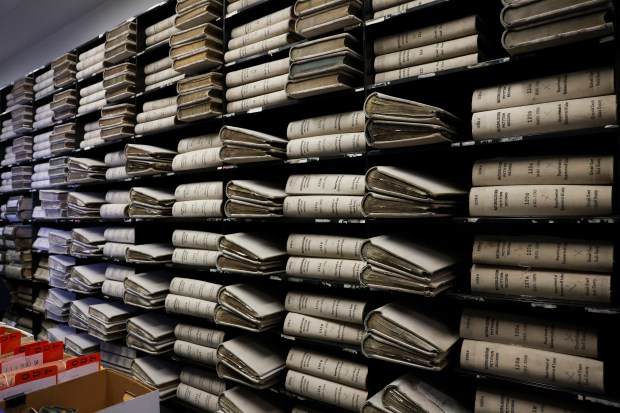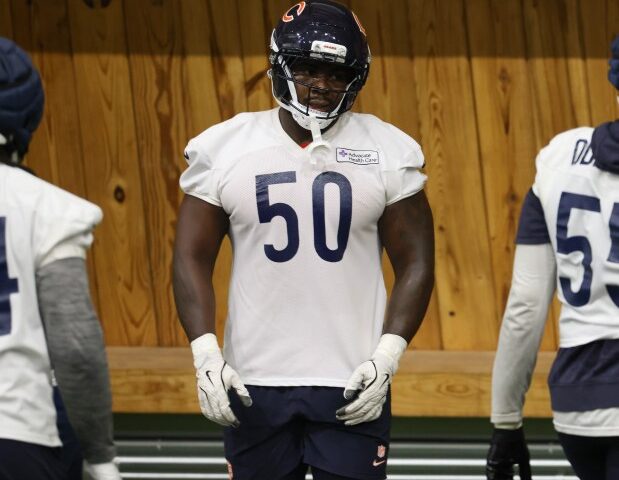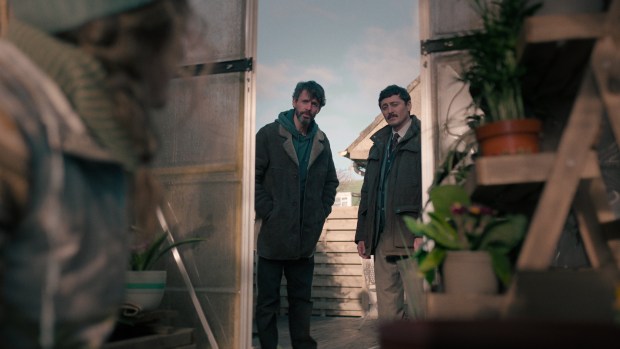Ever since news broke that the new American-born pope is from Chicago, researchers and hobbyists have wasted no time digging into historical records to learn more about the pope’s roots.
That was no different for the staff at the clerk’s office of the Circuit Court of Cook County Archives.
“I think there’s a lot of excitement about the pope being from Chicago,” Mariyana T. Spyropoulos, clerk of the Circuit Court of Cook County, said. “And so our staff are always looking for ‘Is there a connection?’”
Initially, Spyropoulos said that her staff looked into their documents for people with the last name Prevost. The search turned up empty-handed, but that did not stop them. Her staff conducted a deeper dive online, which led them to a group of genealogists that made the connection between the last name Prevost and a man named Salvatore Giovanni Riggitano — the paternal grandfather of Pope Leo XIV.
That discovery prompted the staff to go back into their own archives, and this time they found something: a Declaration of Intention signed by Salvatore Giovanni Riggitano in 1920. It was the first step Riggitano — originally from Italy — was taking in a process to become a U.S. citizen, a process that according to the clerk, Riggitano appeared to have never finished.
The connection was made last week by the clerk’s office and is just one of many discoveries researchers have made on the American-born pope. Earlier this month, New Orleans genealogist Jari Honora discovered that all four of Pope Leo XIV’s maternal great-grandparents were “free people of color” in Louisiana based on 19th century census records.
The discoveries into the new pope’s background provides an opportunity to spotlight to an international audience America’s complex history of melding cultures, immigration and racial divides. It also brings renewed attention to the importance of archival documents in connecting people to those that came before them.
“You could touch the document that your ancestor touched,” Spyropoulos said.
Indeed, it is not uncommon for people to come to the clerk’s archives and cry when given the opportunity to hold a document that a distant relative may have signed.
“You never know who you know you’re going to have a connection with through our archives,” Spyropoulos said.
Who was Salvatore Giovanni Riggitano?
Salvatore Giovanni Riggitano was born on June 24, 1876, in Milazzo, Italy, but was living in Naples before he emigrated to the U.S. He arrived in the U.S. through the port of New York and worked in the states as a language teacher, according to his Declaration of Intention.
Riggitano signed that document when he was about 44 years old and living in the Rogers Park neighborhood.
A group of a little over a dozen amateur and professional genealogists were able to discover even more information about Riggitano. Sean Meyer, an amateur genealogist who worked on that project, said that the group of professionals and hobbyists joined forces online over a shared interest in learning more about Pope Leo XIV’s paternal grandparents.
“We knew who the pope’s father was, we knew who his sibling was and we knew what they listed their parents’ names to be,” Meyer said, noting that they also knew the grandfather was a language teacher. Working with the name Prevost, Meyer said that the group found many ad listings for a language school that had the name Prevost in it: Riggitano-Prevost School.
“One of the things in genealogy is when you’re at a brick wall, which is what we call an impasse in the family tree, you start to look at friends, associates and neighbors,” Meyer said. “So we really wanted to look into this Riggitano man knowing that the Prevost was the individual we were looking at.”
Eventually, the genealogists made the finding that Riggitano and Prevost shared the same birthday, which led the group to believe they were the same person. That discovery, along with the discovery of a form that said John Prevost immigrated to the United States under the name Riggitano, led the group to further believe that Salvatore Riggitano and John Prevost were the same person.
According to their findings, Riggitano was the youngest in his family and received his diploma in languages, history and mathematics in 1895.
Riggitano’s Declaration of Intention states that he immigrated to the U.S. in 1905, although the genealogists have traced his immigration to as early as 1903. When he arrived, he traveled from New York to Quincy, Illinois, and went on to become a teacher of Romance languages. He worked at a couple of different schools before opening the Riggitano School of Languages in 1922, which rebranded to the Riggitano-Prevost School in 1934.
Riggitano frequently advertised his language school in newspapers. A search through the Tribune’s own archives found listings for the Riggitano-Prevost School from the 1930s all the way to 1956. The Tribune’s archives also include a death notice for John Prevost listed in 1960.
Genealogy for all
While Meyer is no stranger to genealogy, he never once thought that he would work on a project about a figure as significant as the pope. Ultimately, what the Chicagoland native admires most about this project is how much of the pope’s story is relatable for other people.
“And I think that’s why people were so interested in the pope’s ancestry, because it’s such an American story,” Meyer said. “And I think not just what we’ve uncovered, but his whole background — growing up in Chicago and the experience in the Catholic communities, so much of that is such an American story for people.”
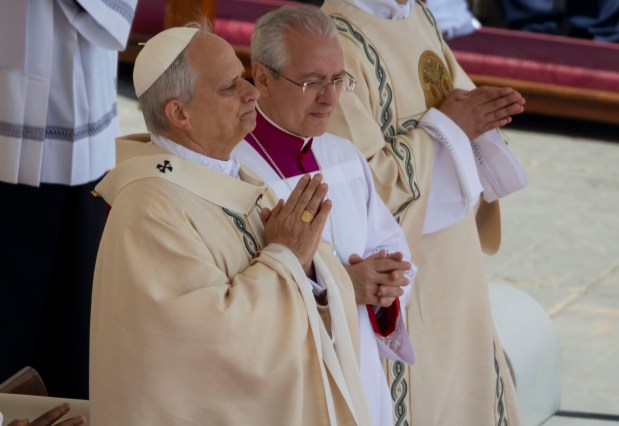
search project will inspire others to take on their own genealogy projects.
“Genealogy is one of those hobbies that we think should be accessible to everyone, and definitely has been made more accessible for everyone thanks to the available resources on the internet,” Meyer said.
Spyropoulos echoed a similar sentiment and encouraged people to visit the archives at the clerk of the Circuit Court of Cook County.
“We obviously have very passionate staff who like history, who like, you know, documentation, who have attention to detail, and they would help anybody,” Spyropoulos said.
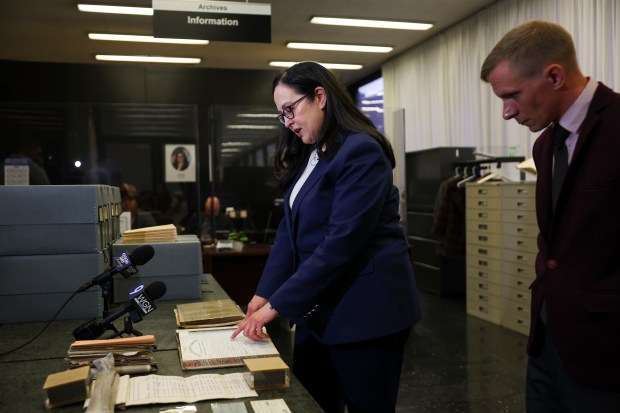
Those interested in visiting the archives can email archives@cookcountycourt.com or can call 312-603-6601. Visitors can also walk into the archive room on the 11th floor at the Daley Center, located at 50 W. Washington St., Suite 1113. No appointment is necessary.
The Associated Press contributed to this report.


